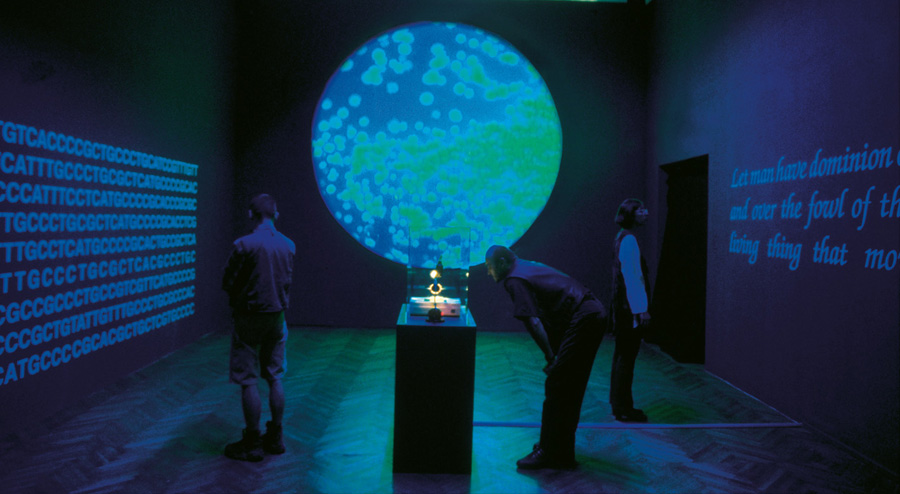The term “New Media” is expanding, since its emergence out of Pop Art, Fluxus, and other earlier movements, to mean many things. It is digital, it is interactive, it is dynamic, it is animated, it is dangerously hactivist…it is an expression of changing times and cultures, of the horizon called the future coming closer to us. One particular instance of New Media which has branched out into its own discipline is “Bio Art,” such as that practiced by British artist Jane Prophet in her project Silver Heart, seen below.
Bio Art relates not only to biological sciences, but to engineering, robotics, and architecture, which follow the same structural principles in building complex forms. One example of architectural influence in Bio Art is the work of Macoto Murayama, a graduate student from Miyagi University of Education who uses his expertise to create beautiful, fluid forms like flowers. In speaking of the relation between the plant and digital technology, he notes:
“[The flower] is organic and is rather different from architecture [in that way][…][But] when I looked closer into a plant that I thought was organic, I found in its form and inner structure, hidden mechanical and inorganic elements.” (The Scientist, p.1). The two worlds are, after all, not so separate. Nature and technology merge ever more seamlessly with the integration of various disciplines into New Media Art.
The term Bio Art was first coined by Eduardo Kac, an American artist born in Brazil. Kac is well versed in the fields of biotechnology and genetics, and employs his expertise in various art projects to critique said fields of study, along with scientific techniques in general. A good example of this strategy is Kac’s first “transgenic” piece, “Genesis.” This work is not only an expansion of the realm of Bio Art, but of art as a complicated series of processes leading to a perhaps far less complicated end result. In Genesis, the “art” lies mainly in the concept and execution: the display is merely gloss. Kac takes this quote from the Bible: “And God said, Let us make man in our image, after our likeness: and let them have dominion over the fish of the sea, and over the fowl of the air, and over the cattle, and over all the earth, and over every creeping thing that creepeth upon the earth,” and turns it into Morse Code. He translates that information into the base pairs, A-T, G-C of the fundamental double helix DNA structure, then turns them into the theoretical genetic sequences which would be created from that data, then implants that genetic material into bacteria and swabs the entire amalgamation onto a petri dish.
Viewers (via webcam) are given the option to turn on a UV light above the dish, triggering mutation and destroying the fragile links between the quote and the organisms if they disagree with the statement therein expressed. However, in doing so they themselves exert dominace over nature, contradicting their initial perspective. The art lies in the dichotomous choice a viewer must make, whether to change what he does not agree with, or conversely, be passive about that which he holds true (for those accepting the statement would not wish to manipulate the bacteria and destroy the statement). It addresses the gap between human reason and action. For instance, how does one uphold pacifism? One cannot force an invading army to stop killing, while upholding a rule of no fighting.
Such questions, and many other interesting dilemmas, are at the forefront of exploration in Bio Art.
It is a strange direction to take, and a strangely inverted view of the world: that the internal workings and functions of objects such as flowers or the human body should be their celebrated components, rather than the outer forms so praised by artists of the past, is a perspective not merely strange, but contentious to many. It will be interesting to see where Bio Art, and the rest of the broadly expanding behemoth that is New Media, goes next.
References:
http://www.janeprophet.com/2011/09/rapid-prototype-sculpture-art-3d-printer-polymer-algorithn-silver-heart-2004/
http://the-scientist.com/2012/02/16/building-flowers/
http://ekac.org/geninfo2.html




